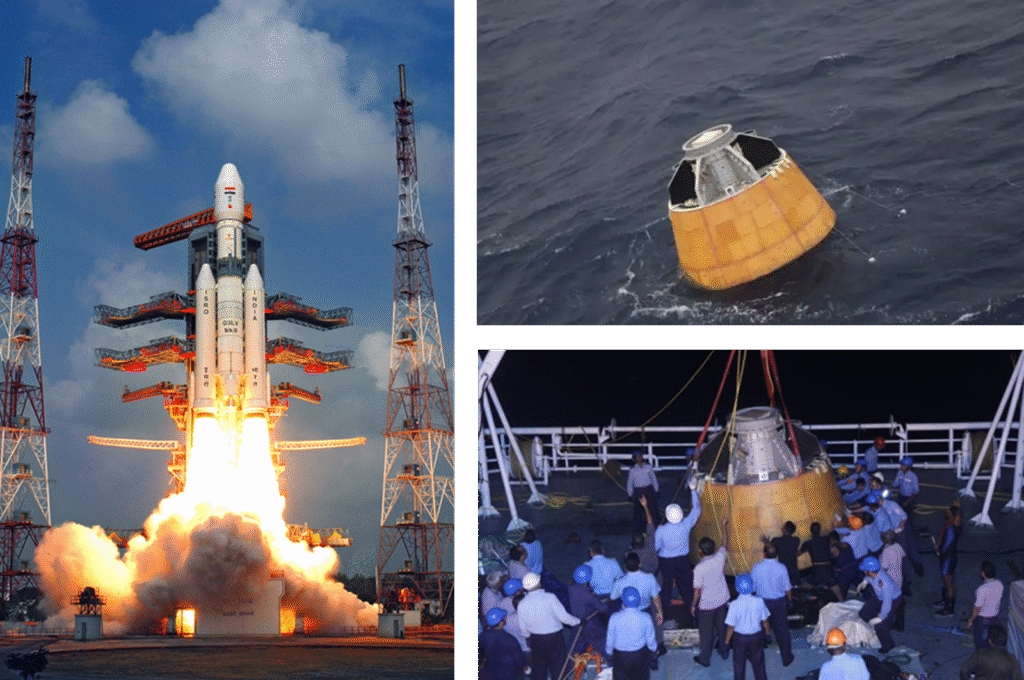NEW DELHI|OCTOBER 24, 2025| SKY LINK TIMES|
The Indian Space Research Organisation (ISRO) is gearing up for a packed end to 2025 with two major LVM-3 launches, the CMS-03 communication satellite and the U.S.-owned BlueBird-6, as announced by ISRO Chairman V. Narayanan during a press conference on Thursday.

Speaking at the Emerging Science, Technology and Innovation Conclave 2025, Narayanan also shared crucial updates on India’s flagship space missions, including the Gaganyaan human spaceflight, Chandrayaan-4 lunar mission, and the upcoming Bharatiya Antariksh Station.
ISRO Upcoming Launches: CMS-03 and BlueBird-6
The CMS-03 (GSAT-7R) communication satellite will be launched aboard LVM3-M5 in early November, with the launch window likely on November 2, ISRO officials confirmed.
Following that, the 6.5-tonne BlueBird-6, one of the heaviest commercial payloads from a private U.S. company, is set for lift-off by the end of the year. “We have received the satellite and are preparing the vehicle for launch,” Narayanan said. The BlueBird satellite arrived in India on October 19 and is undergoing integration at the Satish Dhawan Space Centre.
Mission Updates: NISAR, Gaganyaan, Chandrayaan-4
Narayanan confirmed that the NASA-ISRO Synthetic Aperture Radar (NISAR) satellite, launched on July 30, is currently in the calibration stage and will become fully operational within the next 10–15 days.
Also Read: https://skylinktimes.in/asteroid-alert-qv9-to-fly-past-earth-on-sept-10/
On the Gaganyaan project, India’s first crewed spaceflight, Narayanan said “90 per cent of the work is complete”, and the mission aims for a 2027 timeline. He also reaffirmed India’s plan to establish its own space station by 2035, with the first module expected to enter orbit by 2028.
The upcoming Chandrayaan-4 mission, which will attempt to bring lunar soil and rock samples back to Earth, is now in its design phase, with infrastructure development already underway.
NavIC & Technical Setbacks
Addressing recent issues with India’s NavIC navigation satellite system, Narayanan confirmed that the constellation will be fully operational within 18 months. “We are adding three more satellites to complete the network,” he said.
He also discussed the NVS-02 satellite malfunction, attributing it to a valve failure that prevented orbital circularization. A failure analysis committee has submitted corrective recommendations to the government.
Vision 2047: Expanding India’s Space Ambitions
Under Prime Minister Narendra Modi’s Vision 2047, ISRO aims to triple its current satellite fleet of 56 within four years. Since 1980, India has launched 433 foreign satellites, 95 of which were completed in the last decade.
Narayanan also revealed plans for a next-generation heavy launcher capable of lifting 30,000 kg to low Earth orbit and a crewed lunar mission vehicle being conceptualized for the future.
For More Info Stay Tuned: https://skylinktimes.in



